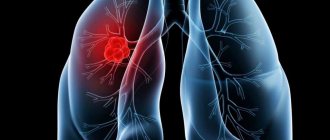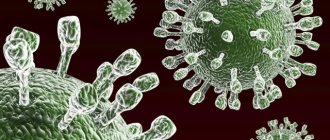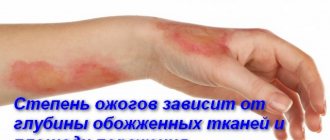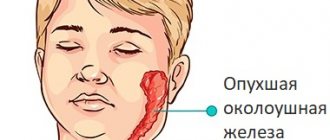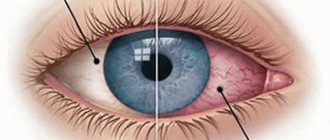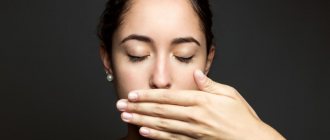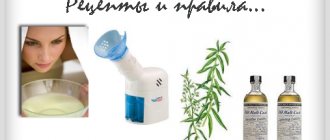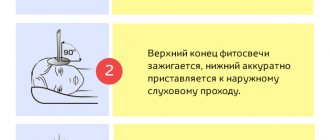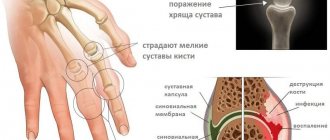Recently, a strange phrase has been heard more and more often - “whooping cough in adults,” whereas almost quite recently whooping cough was considered an exclusively childhood disease, posing virtually no threat to adults. Whooping cough, a serious respiratory disease, was listed according to statistics until the mid-50s of the twentieth century as the most severe disease, leading to the death of thousands of children.
The first descriptions of whooping cough come from the mid-16th century. It was then that epidemics occurred, and the disease was considered practically incurable. After mass vaccination, the situation has changed, and now the whooping cough vaccine is included in the mandatory list of childhood vaccinations.
If previously whooping cough was considered exclusively a childhood disease, then somewhere in the last 10 years the situation has taken the opposite turn. The number of infected adults is growing, it has doubled and is more than 0.3 per 100 thousand population. Epidemiologists explain this fact by the fact that the virus has mutated: new, highly toxic Bordetella bacteria have appeared, with a more stable ability to infect. In addition, diagnostic methods have recently improved significantly, and, consequently, medical reporting has improved.
Causes of whooping cough in adults
The cause of whooping cough is a bacterium of the Bordetella family, which spreads by air no more than three meters. It is believed that this is a rather weak bacterium and quickly dies in the external environment, and therefore infection of humans through household items is unlikely.
Infection occurs through close contact, and even the fact that the patient will be in another room will help avoid infection with whooping cough. However, with close contact, infection occurs quickly, and an infected patient can pose a real threat to others for another two months.
The main reason for the appearance of whooping cough in adults is the fact that vaccination carried out at an early age is short-lived, lasting for 10 years (sometimes a little more). The resulting immunity is no longer effective and adults become easily infected.
What is whooping cough
The infection that most often affects children is bacterial in nature. Whooping cough is a disease caused by the aerobic gram-negative coccus Bordetella pertussis (whooping cough bacillus) and occurs in an acute form. The microorganism is characterized by low resistance to external influences. Pathogenic bacteria:
- cannot tolerate temperatures above 56 degrees;
- dies when using disinfectants;
- within an hour it loses its viability from direct sunlight and ultraviolet radiation;
- dies at low temperatures.
The pertussis bacillus, getting on the mucous membranes of the upper respiratory tract, spreads to the bronchi, larynx, and trachea. This limits the area of its action - the spread of bacteria into deep tissues and throughout the body does not occur due to special villi that help to stay on the epithelium. Bordetella pertussis produces endotoxin, which:
- irritates the vagus nerve;
- provokes the passage of a signal to the respiratory center of the medulla oblongata;
- forms a focus of excitation in it;
- causes a response to irritation - a reflex cough.
After the process of excitation in the nerve center, an impact occurs on neighboring areas of the brain, which provokes vomiting, vascular spasms, and convulsions. The problem with this infectious disease is that:
- the cough reflex is permanently fixed in the brain;
- difficult to treat;
- persists for several weeks after the bacteria die;
- waste products of microorganisms lead to general intoxication;
- endotoxin reduces the body's defenses.
The incubation period for whooping cough lasts from 3 to 14 days. Immunity against infection is developed only in a person who has recovered from the disease. The disease is transmitted by airborne droplets. Please note:
- the source of infection is a patient with pronounced clinical signs of whooping cough;
- the pathogen spreads by coughing, sneezing, talking to a distance of no more than two meters - infection occurs only through close contact;
- Children get sick more often;
- contact route of infection is impossible - the pathogen does not remain viable in the external environment.
The infection is dangerous due to its complications. In childhood, untimely assistance can result in death. The severe consequences of whooping cough include:
- cerebral hemorrhages;
- damage to internal organs - liver, kidneys;
- lung diseases;
- epileptic seizures;
- rupture of the eardrum;
- respiratory arrest;
- inflammation of the middle ear.
Symptoms of whooping cough in adults
Precursors of whooping cough in adults are often too similar to simple hypothermia or acute respiratory infections - signs of the catarrhal stage.
Usually this:
- Sore throat – “lump”;
- Runny nose;
- Tearing;
- Cough without sputum;
- Low temperature;
- Weakness.
The first stage is “false” bronchitis or a cold
At the first stage, whooping cough is difficult to diagnose, because its main symptoms are often mistaken for bronchitis and even a seasonal cold, especially since infection often occurs in late autumn or early winter.
In adults, it is even more difficult to make a correct diagnosis, since the majority of mature people have long been accustomed to suffering from diseases on their feet and not going to the hospital with every cold. This is why more than 90 percent of accurate diagnoses occur in children. Adults account for only about five to six percent.
The second stage - redness in the throat, change in voice
Gradually the disease moves to the second stage. The throat turns red, the voice becomes hoarse, and cough medicines bring virtually no relief. At night, coughing attacks become stronger, and the disease gradually takes on the stage of spasmodic cough. The cough already occurs in the form of attacks (from 10 to 30), the inflammation takes on a focal character and spreads to the lungs, trachea, and larynx. Breathing becomes whistling, voice almost disappears, breathing becomes very difficult.
A cough is provoked by any irritant, be it ordinary dust or light hitting the eyes or a sharp sound. During a coughing attack, the skin of the face turns purple and the person is unable to breathe. In rare breaks, the patient tries to take a sharp breath, and then a whistle occurs - a reprise. After the attack comes out, there is mucus, abundant and transparent. When accompanied by infection with other microorganisms, the nature of the mucus may change.
Whooping cough bacteria are very toxic; they corrode the mucous membranes of the mouth and respiratory system. Sometimes they affect the heart and nervous systems, and complications arise. During this period, it is much easier to make a diagnosis, since the symptoms are already pronounced. The bulk of accurate diagnoses occur during this period.
The third stage is recovery
By the fourth week, the cough weakens, but attacks remain for a month or more. The patient remains contagious for three to four weeks. Residual effects can persist for up to six months and are expressed in the form of weakness, loss of appetite and general malaise. After a complete recovery, the adult’s immunity remains for some time, and then disappears, and the person can become infected again.
There are no statistics on adult mortality from whooping cough; as a rule, only small children die from this disease.
Atypical forms of whooping cough
Despite the fact that adults actually tolerate whooping cough more easily, its course more often takes an atypical form. There are three such forms:
- Abortive – catarrhal stage plus a week of spasmodic cough in a rather mild form, and then recovery occurs.
- Blurred form - mild cough, no convulsive attacks, no sputum production.
- Subclinical form - without obvious signs of the disease. However, when taking blood tests, the presence of antibodies or the Bordetella virus itself is detected.
Possible complications
The most common complication of whooping cough is pneumonia caused by a secondary infection. Atelectasis (collapse) of the lungs may occur due to blockage of the bronchi. Extreme strain during coughing can lead to emphysema and cause rupture of the alveoli. Cause subcutaneous, mucous hemorrhages. If a patient has latent tuberculosis, whooping cough will certainly provoke its activation.
Damage to the nervous system is the most dangerous complication leading to encephalopathy. Against the background of frolicking asphyxia, the patient experiences convulsions and a coma state.
With timely treatment, the prognosis is favorable. Whooping cough is most dangerous for children under six months of age. According to statistics, their mortality rate reaches 40%.
The risk of death is associated with pneumonia and other lung lesions. There is a danger of chronic diseases emerging after a severe infection.
Diagnosis of whooping cough in adults
Since the disease is still considered a childhood disease, it is not so easy to make an accurate diagnosis for adults. Not every adult patient goes to the hospital, and, mistaking whooping cough for a common cold, will endure it without medical care.
If the patient does go to the hospital, if whooping cough is suspected, he will be asked to take several tests:
- General blood test, which is sometimes normal. However, the doctor may be alerted to increased leukocytosis with a normal ESR (erythrocyte sedimentation rate).
- Diagnostics of the pathogen. A scraping of the culture is taken from the patient's back wall of the pharynx, however, it is not always possible to obtain the correct result, especially at the catarrhal stage (somewhere on average 40 percent and below). Taking an analysis using the PCR method is more informative, but when taking antibiotics, detection attempts are reduced to zero.
- Conducting a blood serum test using ELISA or RNGA. - ELISA sampling - at the second stage of the disease. The paired serum method is more accurate, in which blood is taken twice (at the beginning and end of the disease).
- Referral for x-ray. If the result is positive, the expansion of the pulmonary tree and the relief of the pattern are noted.
Treatment
Adults are usually prescribed outpatient treatment, without hospitalization. There is no specially verified method of treating whooping cough, and patients are prescribed antibiotics and symptomatic treatment. At the same time, this method is quite effective, and therefore there is no need to talk about any special means.
Antibiotics work especially well in the first week, then the effectiveness decreases slightly, however, they make a person less infectious to others. At the initial stage, the course of treatment is a week, when the disease moves to the second stage - up to 14 days.
Treatment of whooping cough in adults is quite difficult, since the highly toxic pathogen affects the autonomic system. A reflex goes to the center of the brain, which intensifies the cough.
Pathogenesis of whooping cough
When it enters the mucous membrane of the respiratory organs: bronchi, larynx and trachea, the virus attaches to their cells and begins to multiply intensively, this happens far from the bloodstream. In the place where the harmful pathogen has established its colony, the inflammatory process begins. Its manifestation increases upon contact with mucus secretion and decreases upon exposure to the ciliary apparatus of the mucous membranes. Further development of the disease manifests itself in the appearance of ulcers on the respiratory tract and subsequent focal necrosis, this often manifests itself against the background of respiratory diseases accompanying whooping cough.
Pathological manifestations most often occur in the bronchioles and bronchi, and less in the larynx, trachea and nasopharynx. Increasing in size, purulent plugs close the lumens in the bronchi, which leads to the development of emphysema and peribronchial infiltration. The intensity of the development of the disease will depend on the body’s sensitivity to the toxins released by the virus. The constant irritating effect of the whooping cough bacillus on respiratory receptors leads not only to the appearance of a cough, but also affects the state of the nervous system, leads to vascular disorders in the form of a decrease in blood pressure and vascular spasms, and the cough often ends in vomiting.
Factors causing whooping cough
The cough that occurs with whooping cough is influenced by a number of factors:
- allergic reactions to bacteria that entered the bronchi and began to multiply rapidly;
- at the initial stage, cough is provoked by toxins secreted by bacteria;
- irritation of the vagus nerve, which leads to the appearance of a focus of excitation, which manifests itself with a long course of the disease;
- in the advanced stage, coughing attacks may occur even when exposed to loud noise or bright light.
Against the background of a general weakening of the body, the patient may experience increased blood pressure in the vessels of the head or neck, which leads to headaches, eye hemorrhages, blue discoloration and swelling of the face. If the pressure reaches high limits, there is a possible risk of rupture of a vessel in the brain. In the first three weeks of its development, whooping cough is difficult to distinguish from a regular cough, so an infected person can unknowingly infect many others.
What treatment is prescribed for adults with suspected whooping cough?
- For unexpressed, vague symptoms, only antibiotics are used;
- In severe cases, anti-asthmatic drugs are prescribed to relieve spasms and swelling;
- To maintain the autonomic system and, therefore, relieve cough, antipsychotics and sedatives are prescribed;
- In cases of allergies - antihistamines;
- Definitely something expectorant;
- Severe inflammation of the respiratory tract mucosa is treated with anti-inflammatory drugs;
- Sometimes - antiemetic and anticonvulsant, if these symptoms are present;
- They write out a referral to the physical room for inhalations, acupuncture, reflexology;
- Additionally – folk remedies, herbal medicine.
Sometimes adults do not consider their condition serious and prefer to be treated themselves. It is imperative to go to the hospital, since such self-medication can only cause harm. Uncontrolled use of any antibiotics can not only be useless, but also dangerous, causing allergies, swelling and other complications.
However, you can additionally try expectorants and anti-inflammatory drugs, such as:
- Fresh nettle juice – 1 teaspoon three times a day;
- Fresh onion juice with flower honey - half a spoon at night;
- Burnt sugar with water, diluted to syrup - one teaspoon four times a day;
- Grated licorice root with water, boiled in a water bath - four times a day, a large spoon.
Treatment methods
Therapy is selected by the attending physician, taking into account the characteristics of the body and the course of the disease. It is important to follow all the doctor’s recommendations, spend more time in the fresh air, and do wet cleaning indoors. Adult patients do not require hospitalization, except in individual cases when there is an urgent need:
- in the presence of drug allergies;
- if you have chronic respiratory diseases;
- in the presence of severe attacks of coughing and suffocation;
- elderly patients;
- in the presence of mental and autoimmune diseases.
The duration of treatment depends on the characteristics of the immune system, age and medications used.
Drug treatment
If there is a strong load on the immune system and the addition of a third-party infection, antibiotic therapy is required. Tetracycline and cephalosporin drugs are prescribed. The dosage is selected individually. The following drugs are also used:
- Bronchodilators and antispasmodics are prescribed in the first days of acute cough attacks. Helps relieve bronchospasm and suppress the cough reflex.
- Mucolytics – help thin mucus and speed up its removal.
- Vitamin complexes and immunomodulators support the body by stimulating the active production of antibodies to whooping cough.
For whooping cough in adults, mucolytics are prescribed.
For severe vomiting, antiemetic drugs can be administered. Antipyretics are used to reduce fever.
Oxygen therapy
The procedure allows you to saturate the body with oxygen, normalizing the functioning of the respiratory system. Blood flow to the bronchi stimulates the activation of metabolic processes, which speeds up the healing process. Aerotherapy can be carried out in several forms:
- Hiking in the fresh air.
- Breathing exercises, with the help of which the lungs are saturated with oxygen.
- Inhalations with medications and essential oils.
Patients are advised to take frequent walks in the fresh air, especially before bedtime. Breathing exercises are prescribed in the presence of congestion in the bronchi, which prevents the development of complications due to whooping cough. Inhalations using a nebulizer facilitate the penetration of medicinal solutions into the most remote areas of the bronchi, which speeds up the healing process several times.
Oxygen therapy can be carried out using special devices that saturate the air with O2. This helps to replenish its deficiency in the blood and normalize metabolic processes.
Traditional methods
It is impossible to cure whooping cough using only alternative medicine recipes. But with their help you can speed up this process. The most beneficial recipes for health and the immune system are:
- Herbal tea - for 1 liter of boiling water take half a teaspoon of chamomile, sage, linden, mint, coltsfoot. Steam it in a thermos, and then drink it instead of tea every 30-40 minutes. This collection reduces the feeling of nausea in the stomach, relaxes cramped muscles, removing accumulated waste and toxins from the body.
- Medicinal flatbread - potatoes in their skins are boiled over low heat, then the water is drained and mashed to a puree. Add 2-3 tablespoons of flour, 1 teaspoon of ground ginger, 3 drops of eucalyptus essential oil, 2 drops of tea tree oil. Mix well and form a cake, which is placed on the chest, insulated with a scarf. This cake will facilitate the removal of mucus and reduce the frequency of coughing attacks.
- Medicinal ointment - take 50 g of coconut oil and heat it in a water bath until liquid. Add 10 drops of peach seed essential oil, 10 drops of eucalyptus, 5 drops of tea tree essential oil, 4 drops of lavender oil. Stir until smooth and pour into a jar. Allow to cool at room temperature. Apply to the chest with soft massaging movements.
Herbal tea is one of the folk methods of struggle.
Some recipes have contraindications, so before use you need to consult a specialist.
How to treat whooping cough in adults at home
Proper good nutrition and regimen are the main requirements for successful treatment. The patient must be protected from other people, since he will remain a carrier of the infection for another month. The possibility of infection is especially high during the catarrhal stage, then it gradually decreases.
The room must be ventilated several times a day, cleaned, dusted, and the floors washed. Monitor the room temperature, which should be cool. In winter, the air is humidified with water from a spray bottle, since it can be stuffy during the heating season. This reduces the number of attacks of suffocating cough and alleviates the patient’s condition.
You definitely need to go for a walk, as the brain suffers from lack of oxygen. Hypothermia should not be allowed, so it is important to dress warmly.
The food should be light, protein-rich, it is better to stew, bake, or boil everything. Boiled beef, fish, cottage cheese, eggs, kefir, juices and fruits are useful. You need to avoid fried foods, sweets (they make you feel very itchy), honey, and strong coffee. Cigarettes and alcohol are strictly unacceptable, cold and very hot food is undesirable.
Prevention
Any disease is easier to prevent, and whooping cough is no exception. Prevention of whooping cough in adults follows the same principle. Despite the fact that adults also get whooping cough, vaccinations are given primarily to children; firstly, because they suffer the disease much more severely, and, secondly, because they are the ones who infect adults. The immunity of such a preventive injection lasts 10-12 years.
It is imperative to isolate sick people; their contact with newborn children is especially dangerous. If you suspect whooping cough, all tests should be done.
Vaccination against whooping cough for adults
Adults should also be vaccinated every 10 years, but, unfortunately, this is not always observed. If there are children in the family, vaccination is even more necessary. The “cocoon principle” - when all members of the child’s family are vaccinated - works great and helps protect the child even before birth, until after six months he begins to develop stable immunity.
Health care workers also need to be vaccinated, especially those who work with young children. This is quite relevant abroad, while in Russia there are big problems with this.
Modern medicine has two forms of drugs:
- Whole cell;
- Acellular.
The vaccine for adults is formed from acellular components, and it is not produced in Russia.
Children in our country are vaccinated with complex preparations - the DPT vaccine contains pertussis disease cells. It is not at all suitable for adults, as it causes many typical problems. Epidemiologists say that vaccination is recommended for adults, but in Russia there is no special vaccination for adults.
Consequences
With complications after whooping cough in adults, an inflammatory process of the respiratory organs is noted. Highly toxic viruses destroy the functioning of the villous cells, and the respiratory passage loses protection. Harmful microflora containing staphylococcal cells is formed.
As a result, the following complications may occur:
- Pulmonary pneumonia;
- Acute stage laryngotracheitis;
- Emphysema;
- Otitis;
- Pleurisy (damage to the outer cells of the lung);
- Mediastinitis (damage to the serous membrane in the chest);
- Cerebral hemorrhage;
- Encephalopathy (severe brain pathologies);
- Heart diseases.
Whooping cough during pregnancy
The mild form does not pose a threat to pregnancy, while the moderate and severe form can lead to miscarriage or early delivery.
Infection can cause damage to the fetal organs, especially if it occurs before 7-8 weeks. This is how the fetus may develop defects:
Irreversible disorders of the central nervous system;
- Skeletal distortions;
- Congenital deafness;
- Esophageal disorders;
- Hemorrhagic syndrome;
- Defects of the genitourinary system.
The shorter the pregnancy, the higher the risk of developing defects. Sometimes doctors strongly recommend terminating a pregnancy, since in the first two months of pregnancy the risk of abnormal fetal development reaches up to 99%. To avoid contracting whooping cough, a pregnant woman must undergo tests after contact with a sick person. Treatment in the initial period is most effective and has fewer complications.
If a woman has been ill, her immunity is transferred to the newborn for a period of 30-40 days.
Diagnosis of whooping cough
The symptoms of an infectious cough in the first stage are similar to a cold or flu, which makes it difficult to diagnose whooping cough. Even experienced doctors recognize the disease only at the 2nd stage of its development. In order to exclude pneumonia and tuberculosis, a chest x-ray is prescribed. An increase in the level of leukocytes and lymphocytes in a blood test does not confirm the development of whooping cough, it only proves the presence of infection in the body.
Effective ways to determine the cause of a spasmodic cough are a nasal swab and sputum culture. The latter includes a laboratory test in which the patient coughs onto a special plate coated with a nutrient medium. It is placed in a thermostat and after a certain time the appearance of a colony of pertussis bacteria is observed, which confirms the primary diagnosis.
Article on the topic: Kinesio taping - what kind of treatment method is it?
Treatment of whooping cough in adults
Treatment of infectious cough without complications can be carried out on an outpatient basis in accordance with the regimen determined by the doctor. Treatment of whooping cough requires an integrated approach, including medications, folk remedies and adherence to general rules . The latter include:
- isolation of the patient from others;
- daily wet cleaning and ventilation of the room with an infected person;
- eliminating factors that provoke a painful cough (smoking, exhaust fumes, wind).
Drug therapy
Treatment of an upper respiratory tract infection involves the use of antibiotics. The effective period for drug treatment is the first 14 days. After 3 weeks, it is not advisable to use antibiotics for whooping cough, because the bacteria die on their own, and the cough continues from the action of the toxin produced by bordetella. Whooping cough in adults in mild form is treated with the drugs Ampicillin, Flemoxin, Tetracycline. Taking macrolides is effective:
- Azithromycin;
- Erythromycin;
- Clarithromycin.
Moderate and severe forms of the disease require additional treatment. Antibiotics for whooping cough in adults are supplemented with cephalosporin drugs - Ceftriaxone, Zinnat. To relieve laryngeal edema, hormonal drugs of the corticosteroid group are prescribed - Prednisolone, Kenacort. Antitussive drugs - Ascoril - help relieve cough. Complex treatment of whooping cough involves the use of expectorants and sputum thinners - Ambroxol, Bromhexine.
Many doctors supplement antibiotics for whooping cough in adults with homeopathic medicines. They do not affect the Bordet-Gengou bacterium, but help relieve symptoms and reduce the duration of the disease. Homeopathic remedies for whooping cough include:
- Pulsatilla.
- Aconite.
- Belladonna.
- Sulfur.
- Sundew.
Folk remedies
The use of traditional medicine in the treatment of whooping cough promotes a speedy recovery . The most famous remedy is sunflower seeds. Seeds in the amount of 3 tbsp. spoons must be washed and dried in the oven. Then grind finely. Mix 300 ml of water with a tablespoon of honey and pour this over the seed powder. Boil the resulting mixture until the volume is reduced by half. Next, cool and strain the broth, take 5-6 times, several sips at a time.
There are many recipes for treating infectious cough. These include:
- 2 tbsp. spoons of chopped garlic should be poured with 100 g of melted butter. Rub the cooled mixture on your feet. Then you need to put warm socks on your feet.
- Fir and camphor oils must be mixed 1:1 with vinegar. Wet a cotton napkin in the resulting solution, make a compress in the area of the patient’s bronchi, and wrap him in a warm blanket.
- 100 ml of vegetable oil must be mixed with 5 chopped garlic cloves. The mixture should be boiled for 5-7 minutes, cooled and taken every 3 hours, a teaspoon for 3 days.
Answers to frequently asked questions about whooping cough in adults
- Can an adult who has been ill once become infected with whooping cough a second or third time? Maybe, since immunity lasts no more than 8-10 years. A person can get whooping cough several times in his life.
- How to understand that it is whooping cough and not a common cold? Coughing attacks indicate whooping cough, especially in the second stage of the disease. In an atypical form without pronounced symptoms, a cough for more than 2-3 weeks should alert you. It is necessary to undergo tests.
- Which doctor should I contact if I suspect whooping cough? The initial contact is to a general practitioner, then to a pulmonologist and an infectious disease specialist.
- Can an adult always become infected from a child? In most cases it can. The probability is reduced to zero if a person has recently been ill or has been vaccinated against whooping cough in the last 10 years.
- Where in Russia can an adult get vaccinated? The vaccination can be done abroad; in Russia there is no vaccine for adults.
- Are there always complications after having whooping cough? No, especially if treatment for the disease is started on time. Self-medication is unacceptable, since it is precisely this that leads to complications of various types.
- Does it make sense to give DTP to an adult? No, because this vaccine is complex and contains additional cells from pathogens of many diseases that are unnecessary for an adult. The risk of complications outweighs the benefits.
Whooping cough is a childhood disease, but adults also get it. An important symptom is a persistent cough for several weeks. It should be remembered that the earlier the treatment is started, the higher the result. Therefore, if you suspect whooping cough, you should consult a physician and take blood and urine tests.
A healthy lifestyle, proper nutrition, and monitoring your own health will help you avoid contracting whooping cough, and therefore avoid many complications.
Prevention
The only way to alleviate the disease in adulthood is vaccination in childhood. The DPT vaccine against whooping cough, diphtheria and tetanus helps to develop certain antibodies to the bacilli, which, in the presence of infection, come into action more quickly, reducing the risks of complications and death.
To minimize the likelihood of becoming infected with whooping cough, you must:
- Eat right and strengthen your immune system by giving up smoking and other bad habits.
- Avoid direct contact with sick people. If this cannot be completely avoided, then use personal protective equipment.
- Limit visits to public places during peak respiratory illnesses.
- Humidify the air, carry out wet cleaning every other day.
- Spend more time outdoors, giving preference to active recreation over watching movies.
Whooping cough cannot be completely prevented. But vaccinated people have a better chance of a favorable prognosis, so you should not refuse immunization. In the presence of antibodies to whooping cough, the disease progresses faster, and the complications are not as serious as in people who ignored routine immunization.
Symptoms
Whooping cough is a disease that can be very serious in every age group; Symptoms usually appear within 5-10 days after infection (incubation time), rarely up to 3 weeks later.
In vaccinated people, in most cases the symptoms will be of short duration.
The percentage of people may experience the following symptoms:
- apnea (forced lack of breathing);
- cyanosis (blue-violet skin color due to lack of oxygen);
- vomit.
The causative agent of whooping cough and routes of transmission
Whooping cough is an infection transmitted by airborne droplets from a sick person to a healthy person. The causative agent of whooping cough is the Bordet-Gengou whooping cough bacillus (bordetella), named after the scientists who discovered it. The Bordet-Gengou pertussis bacillus has a “relative” - Bordetella parapertussis, which causes the so-called parawhooping cough - a disease whose clinical picture is similar to whooping cough, which occurs in a mild form. Bordetella are unstable in the external environment and quickly die under the influence of high and low temperatures, ultraviolet radiation, and drying. So, for example, open sunlight destroys bacteria in one hour, and cooling - in a matter of seconds. Therefore, handkerchiefs, household items, children's toys, etc. do not pose an epidemic danger as transmission factors. Special sanitary treatment of the premises in which the patient stayed is also not carried out. Transmission of infection, as a rule, occurs through direct contact with the patient (staying at a distance closer than 1.5 - 2 m from the patient). Most often, inhalation of mucus particles released into the air occurs when coughing, but the pathogen can also be released into the environment when sneezing, talking, etc. The maximum danger in epidemiological terms is posed by the patient in the first week of spasmodic cough (during this period, the causative agent of whooping cough is isolated from 90 to 100% of patients). Subsequently, the danger decreases (in the second week, about 60% of patients secrete bordetella, in the third - 30%, in the fourth - 10%). In general, infection is possible through contact with a patient with whooping cough, starting from the last days of the incubation period until the 5-6th week of the disease. With whooping cough, bacterial carriage also occurs, that is, a condition in which a person releases dangerous bacteria into the environment, but does not feel any signs of the disease. But bacterial carriage in whooping cough is short-lived and has no particular significance for the spread of the disease. The greatest danger is posed by mild and erased forms of whooping cough, when a periodically coughing child or adult remains in a group. Whooping cough is a disease that is usually classified as a so-called childhood infection. The proportion of children among those diagnosed with whooping cough is about 95-97%. The greatest susceptibility to infection is observed between the ages of 1 and 7 years. However, adults are also not immune to developing whooping cough. According to some data, the probability of infection among adults in a family with a sick child can reach 30%. In adults, the disease often occurs in an erased form. Often such patients are mistakenly diagnosed with “chronic bronchitis” and unsuccessfully treated for a non-existent disease. Therefore, doctors advise that if you have a prolonged cough, especially in cases where it occurs with painful attacks, pay attention to the epidemiological situation - whether there has been contact with a child who has been coughing for a long time. Patients who have recovered from whooping cough develop lifelong immunity. However, as with vaccination, immunity to whooping cough does not exclude the disease from parapertussis, which is clinically indistinguishable from a mild form of whooping cough.
Whooping cough during pregnancy
Treatment of expectant mothers is complicated, so it is better to undergo preventive vaccination in advance (even when planning your “interesting situation”). If this is not done in a timely manner, whooping cough in pregnant women is fraught with extremely unpleasant consequences for the mother and child. If the infection occurs at the beginning of the first trimester, the woman is advised to have an abortion. However, this does not mean that in later stages of pregnancy whooping cough occurs without fatal consequences for intrauterine development. For example, doctors do not rule out the following pathologies:
- Congenital heart defect;
- damage to the central nervous system;
- congenital deafness;
- cataract;
- hemorrhagic syndrome.
During pregnancy, it is also recommended to take tests, after which the doctor prescribes expectorants and sputum thinners for treatment, but does not exclude the use of antibiotics. You can give preference to homeopathy, but in this case you need to make sure that there is no allergy to the active components of the chosen medicine. Moreover, the patient is quarantined, since the infection can be transmitted not only to the fetus, but also to everyone around her, especially with symptoms of weak immunity.
- Cough in the morning in children and adults
- Night cough in children and adults - causes of dry and wet cough, diagnosis and treatment methods
- Main clinical symptoms and syndromes of infectious diseases
Forecast
Whooping cough has a favorable prognosis and ends with recovery. Death is possible in infants and the elderly. The most common causes of death are cerebrovascular accidents and pneumonia.
The addition of a secondary bacterial infection can lead to a deterioration in the general condition of the patient and a more severe course of the underlying pathology. Complicated forms of whooping cough lead to unfavorable long-term consequences - chronic lung diseases and nervous system disorders. Children develop neuroses and psychoses, epilepsy, mental retardation up to mental retardation.
Symptoms and diagnosis
The main symptoms of whooping cough persist throughout the illness. Spasmodic cough, weakness, increased excitability and fever accompany the patient for two to three weeks. A wheezing cough worsens at night. Severe attacks can cause facial flushing, tears, and increased blood pressure. The temperature rises above 38 °C quite rarely, and the gag reflex during coughing practically does not occur.
The causative agent of whooping cough is coccobacilli, which causes specific damage to the bronchial epithelium. Whooping cough is not an epidemic disease, but outbreaks of numerous parallel infections occur periodically. It is known that more than 60 million people suffer from whooping cough every year, and the disease does not have a clear location - thanks to the easy transmission of the infection, it has become widespread throughout the world. The seasonality of the disease is also not expressed, so it is not possible to predict the incidence rate in certain countries, in a specific season and in a certain age category of the population.
A whooping cough test can identify the bacterium Bordetella pertussis. To do this, you need to take a swab from the throat and submit it for bacterial culture. The effectiveness of such diagnostics is high in the first three weeks from the onset of the disease, after which the causative agent of whooping cough is practically undetectable. Previously, cough plates were often used, but due to the fact that material for research can only be obtained during coughing, this method was gradually abandoned. It was replaced by an enzyme-linked immunosorbent diagnostic method, which is highly effective in detecting antibodies.
During the entire breeding period, pertussis bacteria do not enter the bloodstream, but actively grow. The trachea and bronchi of each of us are covered with epithelial cells with many small villi. It is these outgrowths that ensure the movement of mucus (phlegm). The inflammatory process and the appearance of small ulcers on the epithelium of the respiratory tract provoke changes in the bronchi. Thus, cough, vascular and nervous disorders are caused by constant and prolonged irritation of the receptors. It often happens that whooping cough infection is eliminated from the body, but irritation and excitement of the epithelial cells does not go away. Then the cough still continues, but has completely different reasons for its occurrence, which are more psychological in nature.
Treatment of whooping cough in children is based on proper patient care
The period of convulsive coughing lasts several weeks, and the attacks themselves usually last about 3-4 minutes. In some cases, after coughing, gagging may occur, but such consequences are not very common. The most common complication of whooping cough is pneumonia. Nosebleeds and even the detection of an inguinal hernia can also become consequences of the disease if you do not consult a doctor in time and do not treat the disease.
What happens in the body?
Bordetella, entering the body, strives to penetrate a certain place. It is not like a commonplace virus, which, settling in the nasopharynx, causes a runny nose and pain when swallowing. Its target is organs covered with epithelium with outgrowths (cilia). These are the trachea, larynx, bronchi.
By attaching to them, the bacterium multiplies and releases toxins. As a result, epithelial cells begin to produce more mucus. But its removal from the respiratory tract is impaired due to damage to the cilia. Mucus accumulates, causing irritation and a cough reflex.
Toxins, when they enter the vascular network, are carried through the bloodstream throughout the body. Penetrating into organs and tissues, they disrupt work at a subtle biochemical level. Oxygen starvation (hypoxia) develops in the cells, and almost all organ systems suffer from this.
When pertussis toxin enters the central nervous system, a focus of constant excitation (dominant) is formed in the cough center of the brain. Therefore, the cough drags on.
From now on, exposure to almost any irritant will lead to a coughing attack. And even after a month, when neither bordetella nor its toxins are in the body, the effect remains.
Reasons for development
Despite the fact that whooping cough can affect a child of any age, the risk group includes children under 6-7 years of age .
Before the age of two, the likelihood of becoming infected with whooping cough is especially high.
Most often, whooping cough outbreaks occur in winter or autumn. This factor is explained by the short daylight hours, and sunlight is detrimental to bacteria that cause infection.
The following factors can cause whooping cough :
- contact with a carrier of pertussis bacillus;
- lack of timely vaccination of the child against whooping cough;
- low level of protective functions of the body.
Read about the symptoms and treatment of infectious mononucleosis in children here.
Treatment of the disease
Treatment of whooping cough is usually prescribed in a comprehensive manner, including taking medications and maintaining the general condition of the body. Self-administration of cough suppressants rarely gives the patient the desired relief, and as a distracting action, it only complicates the recovery process. That is why it is important to seek advice from qualified specialists and strictly adhere to the prescribed medication dosage schedule.
Treatment of whooping cough in children is based on proper patient care. Regular ventilation of the room and wet cleaning are the key to a speedy recovery. Considering that coughing attacks can be provoked by smoke, dust and other irritating substances present in excess in the indoor air, control must be mandatory. In a hospital, the patient may be prescribed oxygen inhalation and suction of mucus from the respiratory tract. Good nutrition and plenty of fluids are also fundamental to child care. Considering the increased irritation of receptors and the high likelihood of a gag reflex, it is better to eat food often and in small portions. In small doses, nutritious foods rich in vitamins and minerals should not burden the intestines and take all the body’s energy for digestion. Food should be light, but healthy, preferably warm and tasty.
Expectorants, antitussives, antihistamines, and bronchodilators help reduce the number of attacks. Children who experience hypoxia and convulsions that develop as a result of coughing are often prescribed anticonvulsants. Antibiotics such as tetracycline and chloramphenicol are effective in the treatment of whooping cough, but due to severe toxicity they are prescribed only to children of high school age and adults. If a child is prescribed tablets, they can be crushed and ground into powder to make them easier to take. Mix medications into food unless a different time of use is indicated in the instructions for the medication.
A whistling, paroxysmal cough includes a series of coughing impulses without the possibility of inhalation (you probably noticed that coughing always occurs while exhaling). Thus, the longer the attack lasts, the more blood rushes to the patient’s face and the more difficult it is for him to normalize breathing after the first breath. The characteristic whistle is called reprise in medicine. This sound is caused by a spasm of the glottis and is directly related to a prolonged absence of deep inspiration.
The course of the disease is theoretically divided into three stages: 1. Catarrhal period, about two weeks, with a dry cough and an increase in symptoms. At this time, the patient is already contagious, but the main signs of whooping cough have not yet appeared. 2. Paroxysmal stage with a specific spasmodic cough, characteristic only of whooping cough. This period can last several months. A characteristic feature will be sputum production and frequent bouts of severe coughing. 3. The third stage, the last. This is a period of recovery and full restoration of health. Usually begins in the third month after the infection enters the body.
The main recipes for tinctures and decoctions for whooping cough contain honey
Therapy to prevent possible complications is one of the important points in the treatment of whooping cough. Prescriptions depend on the severity of the conditions, the form of the disease and test results. Pneumonia often develops in parallel with whooping cough. In a weakened body, streptococci and staphylococci find many options for spreading. Thus, various pathogens (microorganisms) are just waiting for the opportunity to penetrate the body’s tissues.
The only way to prevent whooping cough is vaccination. Only DTP helps to avoid infection or suffer a milder form of the disease and without complications.
Symptoms of the disease
In medicine, there are a number of symptoms of whooping cough. These include:
- severe cough in late evening and early morning;
- high body temperature;
- wheezing in the lungs;
- swelling of the nasal and oral cavity;
- separation of transparent sputum of viscous consistency;
- whistling sound with every inhalation and exhalation;
- cardiopalmus;
- lack of appetite;
- general malaise;
- vomiting after each coughing attack.
In addition, clinical forms of manifestation of the pathological process are distinguished. These include:
- incubation period;
- catarrhal cough;
- antispasmodic urge to cough reflex;
- restoration of respiratory function.
Treatment and prevention of whooping cough
Pediatricians and infectious disease specialists are involved in the treatment and prevention of whooping cough. If you become ill with whooping cough, you should seek medical help from a doctor or paramedic as soon as possible.
Principles of whooping cough treatment
When the disease “whooping cough” is detected, treatment and prevention of complications of the disease can be carried out both at home and in a hospital. This will depend on the age of the patient, the severity of the disease, the presence or absence of complications and some other nuances.
In therapy, adherence to a certain diet, regimen, prescription of antibiotics and other medications play an important role.
Whooping cough vaccine
Vaccination against whooping cough plays a key role in preventing this disease in children. Some parents tend to delay vaccinations for their children, considering them very dangerous in the first year of life. In addition, many parents refer to the baby’s innate immunity from all infectious diseases, as well as the fact that breastfeeding will help the child not contract dangerous infections. But it is for babies that whooping cough is most dangerous. And it is against whooping cough that the child does not have innate protection, and he will not receive it through breast milk. Therefore, postponing vaccination without compelling reasons is inappropriate.
Features of vaccination against diphtheria, whooping cough and tetanus
Prevention of whooping cough by vaccinating the population is quite effective. Vaccination begins in childhood. According to the vaccination calendar, immunization against whooping cough starts at three months of age. Vaccination is usually carried out against several diseases at once (diphtheria, whooping cough, tetanus). There are no single vaccines for whooping cough.
For good prevention of whooping cough, three vaccinations are required: first at 3 months, then at 4.5 months, then at 6 months. That is, the minimum interval between immunizations is one and a half months. At the age of one and a half years, revaccination against whooping cough is carried out. If the vaccination schedule has been violated, revaccination is carried out 12 months after the last whooping cough vaccination.
The whooping cough vaccine can be given using a variety of vaccines. There are whole-cell and acellular vaccines. The latter are much less likely to cause post-vaccination reactions and complications, so their use is especially recommended for children with a history of allergies. However, prevention of whooping cough using whole cell vaccines is more effective.
The most widely used whole-cell vaccine in our country is DPT (which stands for adsorbed pertussis-diphtheria-tetanus vaccine). This is a domestically produced vaccine that protects against the following diseases: diphtheria, whooping cough, tetanus. The British vaccine Infanrix provides protection against the same diseases, but it is acellular.
In addition to DPT, whole-cell vaccines include vaccines not only against diphtheria, whooping cough and tetanus, but also against other diseases. Thus, the French vaccine Tetracok also protects against polio, while the Russian vaccine Bubo-Coc plus provides immunity against hepatitis B.
Some acellular (cell-free) combination vaccines also contain active components not only against whooping cough, diphtheria, tetanus, but also against other diseases. Thus, the French vaccine Pentaxim, in addition to protecting against these diseases, is a prevention of hemophilus influenzae infection and polio. The Infanrix Hexa vaccine additionally protects against Haemophilus influenzae, polio and hepatitis B. There are other combination vaccines against these diseases.
Vaccination against whooping cough does not provide protection against the disease for life; after three years of life, immunity from infection gradually decreases.
Possible consequences and complications
If the infection cannot be cured at an early stage, it becomes chronic.
It is extremely dangerous and threatens the patient with a number of serious consequences:
- Problems with the lungs and bronchi, which cause bronchitis and pneumonia. This happens because there is always a focus of infection in the lungs.
- Causes pathologies in the brain, characterized by loss of consciousness and seizures.
- At the time of convulsive cough, hemorrhage in the eyeballs and brain is possible.
- Constant coughing fits can trigger the formation of an umbilical hernia.
- In adulthood, chronic whooping cough can be fatal.
- Impaired breathing can lead to heart and lung failure.
The consequences of the disease are very serious, so you should not delay contacting a specialist and treatment.
How to treat
The symptoms of whooping cough can only be eliminated using complex therapy.
The treatment method in each specific case depends on the stage at which the disease develops. If moderate or severe whooping cough is diagnosed, the person is prescribed hospital stay. In most cases, such forms of the disease occur in infants and children under 1 year of age.
The disease can also be treated at home. In this case, in addition to following all the instructions of the attending physician, you will need to follow some recommendations:
- daily ventilation of the living space in which the patient spends most of his time;
- systematic air humidification, which will help eliminate coughing attacks and reduce their intensity;
- complete exclusion of all irritants that could provoke attacks.
As for drug treatment, it consists of taking the following drugs:
- antibiotics, which are prescribed for mild cases of the disease (they help alleviate the general condition and are taken for 5-7 days);
- symptomatic drugs (for example, antiemetics, anticonvulsants, etc.);
- antipsychotics, which help reduce the number of seizures that occur after starting their use.
In addition to taking medications prescribed by a doctor, it is necessary to carry out physiotherapeutic procedures, which will only enhance their effectiveness and speed up recovery. The use of folk remedies is also permitted, but only with the consent of the attending physician.
How does infection occur?
Whooping cough is caused by the bacterium Bordetella or whooping cough bacillus. The disease is transmitted exclusively by airborne droplets.
When infected, active damage to the trachea and bronchi occurs. The bacterium disrupts the functionality of the ciliated epithelium of the respiratory organs, complicating the natural process of sputum discharge. Their waste products have toxic effects.
Even after full treatment, the child may continue to have a reflex cough for several weeks.
